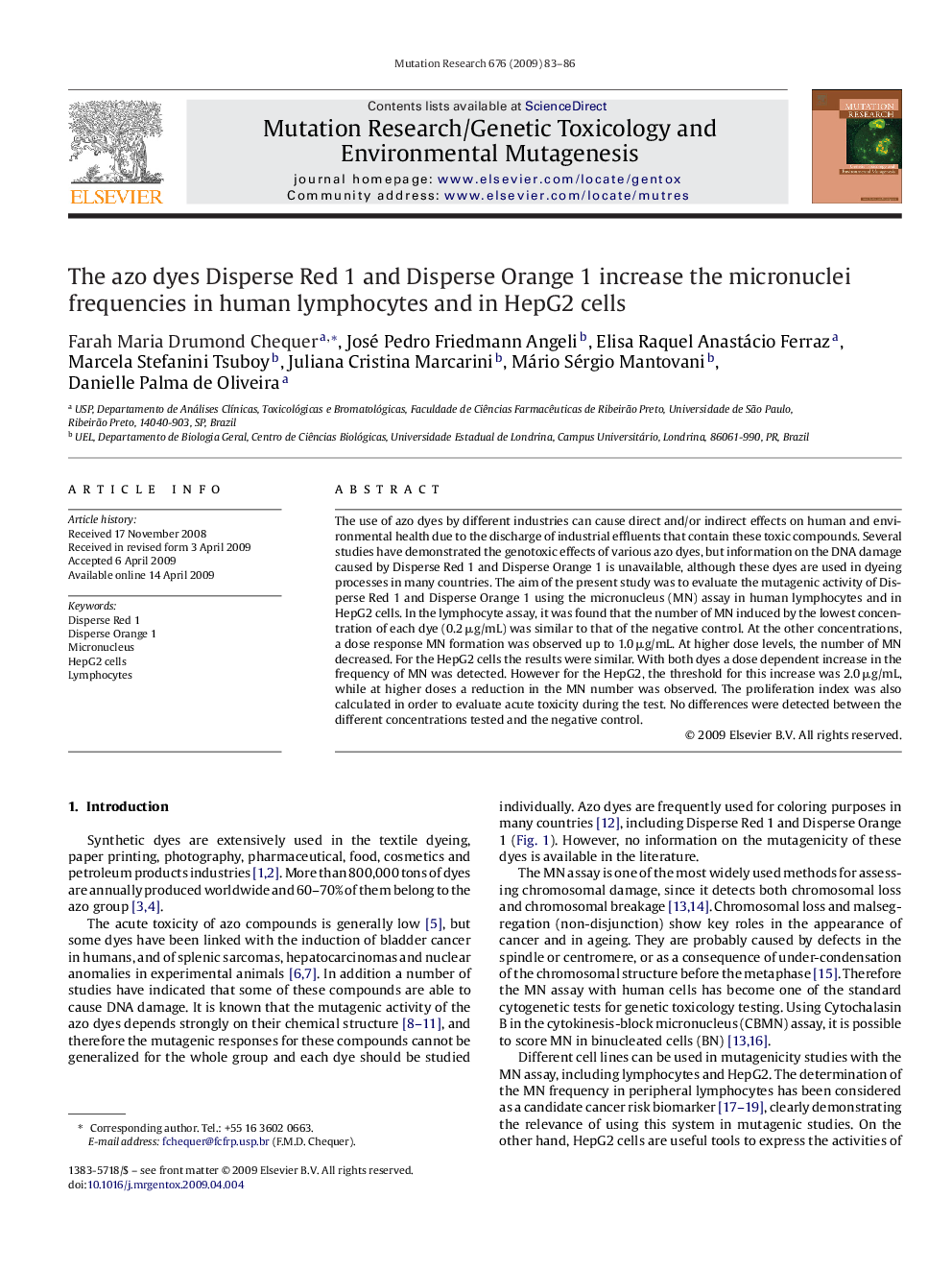| Article ID | Journal | Published Year | Pages | File Type |
|---|---|---|---|---|
| 2148749 | Mutation Research/Genetic Toxicology and Environmental Mutagenesis | 2009 | 4 Pages |
The use of azo dyes by different industries can cause direct and/or indirect effects on human and environmental health due to the discharge of industrial effluents that contain these toxic compounds. Several studies have demonstrated the genotoxic effects of various azo dyes, but information on the DNA damage caused by Disperse Red 1 and Disperse Orange 1 is unavailable, although these dyes are used in dyeing processes in many countries. The aim of the present study was to evaluate the mutagenic activity of Disperse Red 1 and Disperse Orange 1 using the micronucleus (MN) assay in human lymphocytes and in HepG2 cells. In the lymphocyte assay, it was found that the number of MN induced by the lowest concentration of each dye (0.2 μg/mL) was similar to that of the negative control. At the other concentrations, a dose response MN formation was observed up to 1.0 μg/mL. At higher dose levels, the number of MN decreased. For the HepG2 cells the results were similar. With both dyes a dose dependent increase in the frequency of MN was detected. However for the HepG2, the threshold for this increase was 2.0 μg/mL, while at higher doses a reduction in the MN number was observed. The proliferation index was also calculated in order to evaluate acute toxicity during the test. No differences were detected between the different concentrations tested and the negative control.
